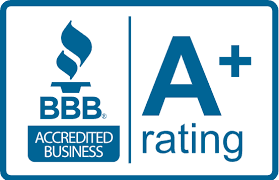What is Electrostatic Cleaning?
What electrostatic cleaning and what it isn't
Well, let’s start off by clearing up a common misconception. The question to ask is, “What is electrostatic disinfecting?” In the cleaning and hygiene industry, “electrostatic cleaning” actually refers to electrostatic disinfecting. While these terms are often used interchangeably, in reality they refer to two very different infection control processes.
Electrostatics provide no mechanical cleaning action, i.e., they do not remove physical soil. Rather, the electrostatic device is used to disinfect mechanically pre-cleaned surfaces. Let’s look into this in a bit more detail.
Electrostatic disinfecting is a way of quickly and evenly coating a surface with a disinfecting solution. This is done by using an electrostatic applicator that gives a positive charge to the disinfecting solution as it exits the nozzle. The charged molecules will repel each other, meaning they will be an even distance from each other, but will be attracted to the surface they are applied too. The charged particles have a charge strength greater than gravity allowing them to directionally target a selected surface very quickly providing near immediate room reentry.
The science behind it is detailed, but in the simplest of terms, electrostatic disinfecting works by providing a charge to a solution so that it electromagnetically sticks to a targeted surface, providing 360-degree coverage.
In most instances, surfaces are neutral. So when an electrostatic disinfecting system, like VitalOxide is used, it provides a negative charge , and will be attracted to a surface with a different polarity.
Electrostatic spray surface cleaning is the process of spraying an electrostatically charged fog onto surfaces and objects. Electrostatic cleaning uses CDC and FDA approved hospital grade disinfectant chemicals that eliminates up to 99.99% of multiple viruses and bacteria including H1N1,MRSA,Norovirus,HIV,Legionella, SARS COV-2 (COVID-19), Hepatitis A,B and C, Ebola Virus and many others.
Electrostatic spray uses a specialized solution that is combined with air and atomized by an electrode inside the sprayer. Subsequently, the spray contains positively charged particles that are able to aggressively adhere to surfaces and objects. Because the particles in the spray are positively charged, they cling to and coat any surface they’re aimed at.
For awkwardly shaped objects or hard to reach places, cleaning staff only have to point and spray; the nature of the fog allows it to coat surfaces evenly, and envelope objects—even if the mist is only sprayed from one side. After the spray is applied, the sanitizing agent works to disinfect the covered surfaces. For this reason, electrostatic spray is an excellent solution for germ and contaminant ridden areas.
How Does Electrostatic Disinfection Work?
Electrostatic spray is electrically charged, allowing the appropriate sanitizers, mold preventatives and disinfectants to wrap around and evenly coat all types of surfaces for a more complete clean. As the chemical exits the electrostatic sprayer, it’s given a positive electrical charge. The droplets then become attracted to all negative surfaces, covering the visible area, underside and backside, with the sanitizing agent. Surfaces that are already covered will repel the spray, making the method extremely efficient.
Is Electrostatic Spray Disinfection Right For My Business?
If your building contains rooms or areas that are sensitive to grime and germs, such as R&D facilities or clean rooms, then yes, electrostatic spray cleaning is the best option for cleaning all the surfaces and equipment in that room. Although electrostatic spray may sound like an aggressive method for regular commercial cleaning applications, the opposite is true.
The main features and benefits of electrostatic spray disinfection include:
· Reduces the time it takes to cover and disinfect all surfaces and hard-to-reach places by 50% compared to conventional methods
· Improves infection control and the spread of viruses such as influenza, MRSA, HIV and many others
· Applies chemicals in a more efficient, controlled manner, eliminating the dangers of overuse
· Prevents costly financial burdens associated with contagious healthcare infections
For desktops, floors and walls that need to be absolutely spotless, electrostatic spray cleaning is the best option. The same goes for equipment and hard to reach places; if a piece of equipment is heavily trafficked, electrostatic spray cleaning in the most comprehensive way to remove germs and dirt.


